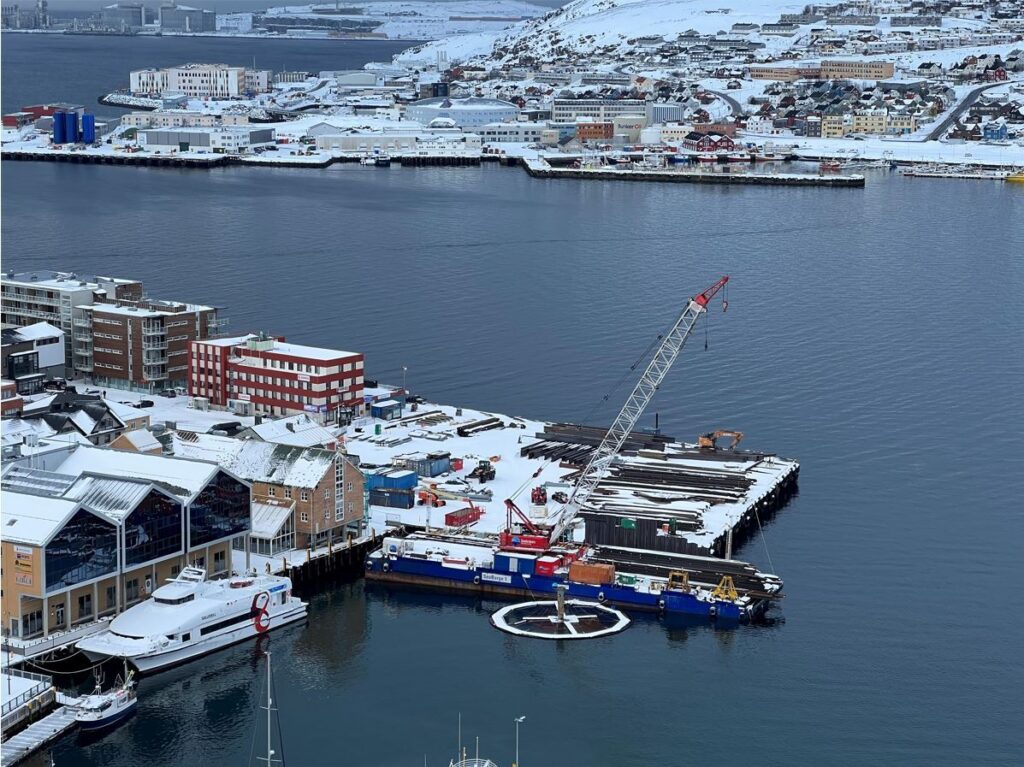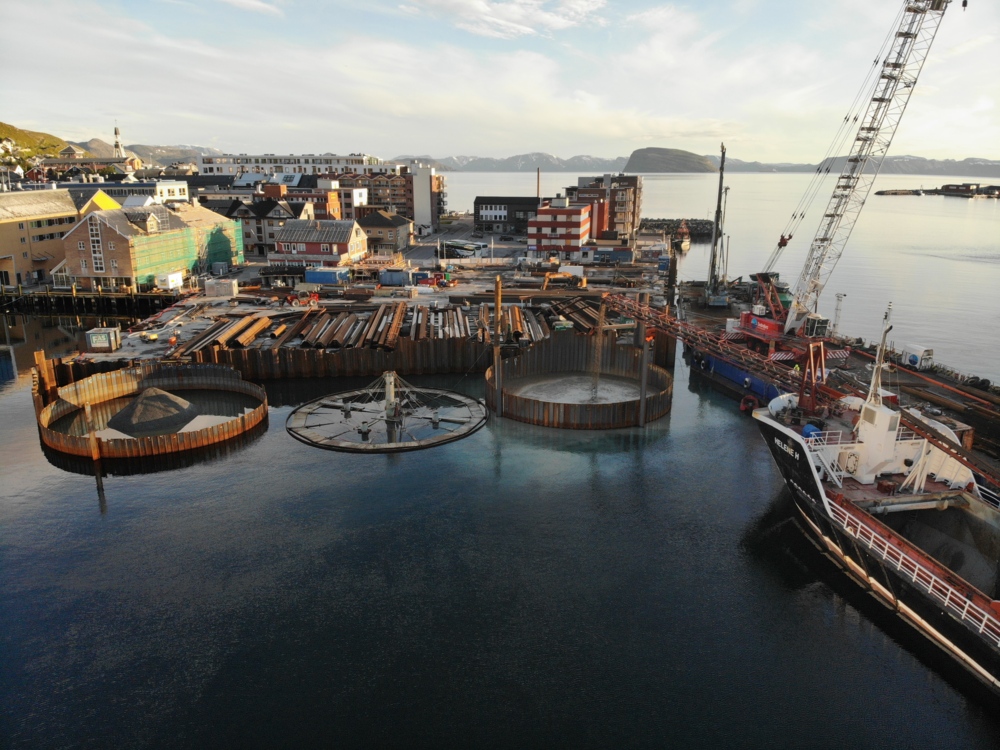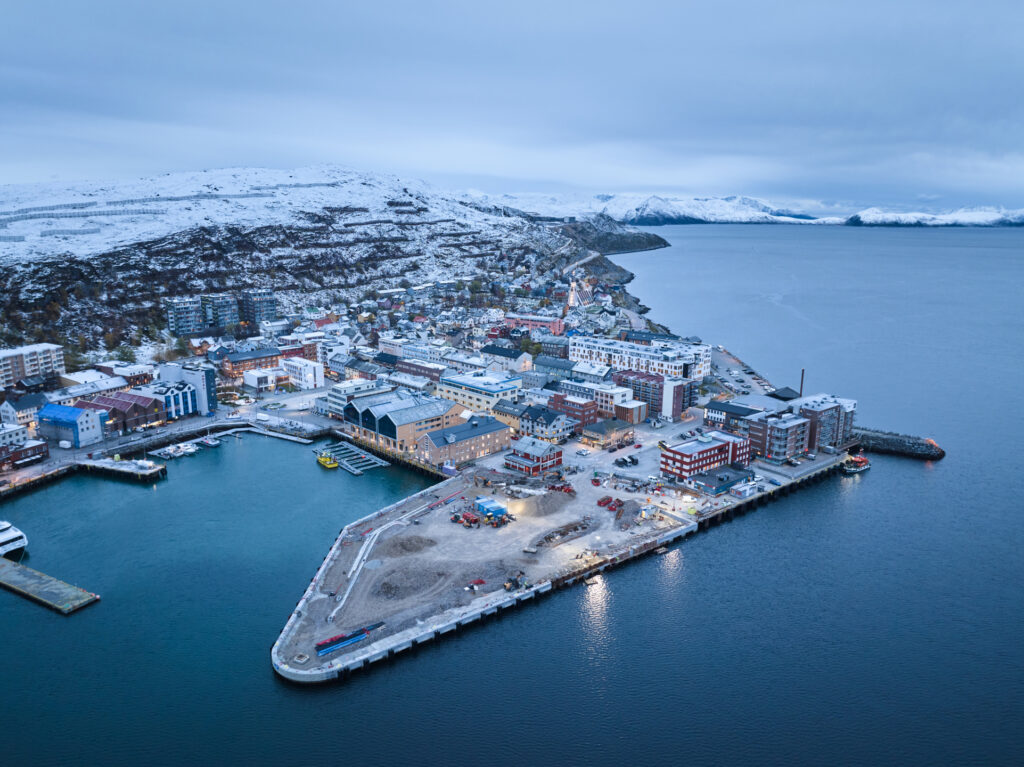From Environmental Threat to Urban Development – the story behind the Havnekvartalet site.

Hammerfest once had one of the most polluted harbors in Norway.
In the past, the easiest solution to waste management was simply dumping it into the sea.
In the autumn of 1945, Hammerfest was burned to the ground as part of Nazi Germany’s Scorched Earth tactic. Since then, the harbor area has been filled with toxic metals, environmental hazards, garbage, sewage — and even a large naval mine, which was discovered during the Clean Harbor Project.
In 2018, Hammerfest received a government order to clean up its harbor. At the same time, the Norwegian Coastal Administration (Kystverket) had plans to deepen the harbor at Fuglenes and the approach to Forsøl.
These efforts were combined into a single initiative — the joint project “Hammerfest Clean Harbor.”
The seabed throughout the central harbor area was cleaned and dredged to remove contaminated sediments.
But this raised a critical question: where would the toxic materials be safely deposited?

Outside the old Steamship Harbor, large sealed silos were constructed to serve as containment sites for the contaminated dredged materials. Today, these silos form the foundation of Havnekvartalet. This harbor expansion has enabled Hammerfest to receive cruise ships and coastal route vessels (Kystruta) in the city center simultaneously. In addition, a new combined dock for express boats is planned for the area.

At the top of the harbor, Hammerfest has gained a large new development space. Logistics facilities to support Havnekvartalet’s role as a transport hub — for the coastal route, cruise ships, express boats, and buses — form the foundation of the area. But above all, this space is made for people and the future, made possible by the Hammerfest Clean Harbor project. Read more about Havnekvartalet here.
Tekst: Katrine Næss.
Last updated: 07.01.2025

